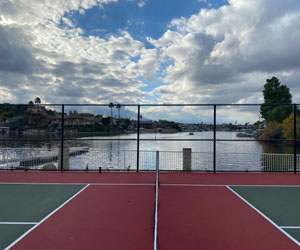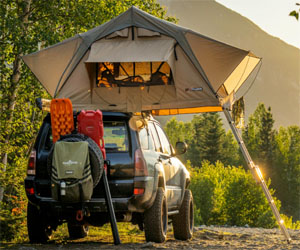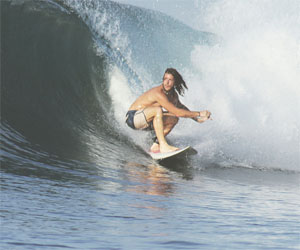


Rules And Regulations Of Pickleball

Pickleball, the exciting and rapidly growing sport that combines elements of tennis, badminton, and table tennis, has garnered a strong following worldwide. With its inclusive nature and accessible court size, it's a game that appeals to players of all ages and skill levels. To truly enjoy pickleball and compete effectively, it's crucial to understand the rules and regulations that govern the sport. In this article, we'll explore the key rules and regulations of pickleball.
Court Dimensions: A standard pickleball court is 20 feet wide and 44 feet long, with a non-volley zone (the kitchen) extending 7 feet from the net on each side. The kitchen is a no-volley zone, meaning you can't hit the ball out of the air within this area.
Scoring: Pickleball is played to 11 points, and you must win by at least two points. In singles, each side gets one serve, while in doubles, both players on the serving team have the opportunity to serve.
The Serve: The serving team starts the game from the right side of the court and must serve underhanded from the baseline. The serve must clear the net and land in the opposing service court, diagonally across from the server. It must also bounce once before being struck by the receiving team. The serving team continues to serve until they commit a fault.
Double Bounce Rule: After the serve, both teams must allow the ball to bounce once before they can engage in a volley (a non-bouncing exchange). This rule ensures that rallies begin with a level of control and reduces the possibility of quick, aggressive plays.
Faults: Common faults in pickleball include stepping into the kitchen while volleying the ball, hitting the ball out of bounds, failing to clear the net, or volleying the ball from the kitchen without letting it bounce. Faults result in the opposing team being awarded a point or the service.
Let Serve: If the serve hits the net and lands in the correct service court, it is called a "let serve" and is retaken without penalty.
Non-Volley Zone Violation: Players are prohibited from volleying the ball from the non-volley zone (the kitchen). Stepping into the kitchen while hitting the ball is a fault.
Serving Position: When serving, players must have one foot behind the baseline and inside the court boundaries. The other foot must remain in contact with or behind the baseline until the ball is struck.
In-Out Calls: Players are responsible for making their own in-out calls. If there's a dispute, a referee or a mutually agreed-upon third party can be called to make a ruling.
Fault Limits: A team is allowed only one fault (failed serve) per side-out. If the serving team faults, the receiving team takes over, and the game continues.
Rotation: In doubles, there's a rotation rule, where players must switch sides after each successful point scored. This helps ensure fairness and equal distribution of court time.
Pickleball's rules and regulations are designed to maintain a fair, enjoyable, and competitive playing environment. Understanding these rules is essential for both newcomers and experienced players alike. Mastery of the rules not only allows for smoother and more enjoyable games but also ensures that the sport remains a welcoming and inclusive pastime for players of all levels and backgrounds. So, whether you're a novice or an expert, embracing the rules of pickleball is a critical step in mastering this fantastic sport.
Connecting With The Avian World
 Nature As A Classroom: Birdwatching transforms the outdoors into an ever-evolving classroom. Nature lovers cherish the opportunity to learn about the diverse species of birds, their behaviors, and their habitats. Every birdwatching outing is a lesson in biology, ecology, and ornithology, providing valuable insights into the interconnectedness of all living things.
Nature As A Classroom: Birdwatching transforms the outdoors into an ever-evolving classroom. Nature lovers cherish the opportunity to learn about the diverse species of birds, their behaviors, and their habitats. Every birdwatching outing is a lesson in biology, ecology, and ornithology, providing valuable insights into the interconnectedness of all living things.
Deepening Appreciation: For nature lovers, birdwatching deepens their appreciation of the natural world. It allows them to witness the delicate beauty of birds up close, from the iridescent plumage of hummingbirds to the majestic flights of raptors. Observing birds in their habitats unveils the intricate relationships between flora and fauna.
Conservation Ethic: Birdwatching often goes hand in hand with a strong commitment to conservation. Nature lovers are acutely aware of the threats that birds and their habitats face, from habitat destruction to climate change. Their passion drives them to support initiatives aimed at preserving these vital ecosystems.
Embracing Mindfulness: Birdwatching is an exercise in mindfulness, encouraging individuals to be fully present in the moment. Nature lovers savor the tranquil rhythm of birdwatching, which allows them to escape the stresses of daily life and find solace in the natural world.


 One of the most captivating aspects of outdoor living is the opportunity to break free from the trappings of modern life. As we venture into the wilderness, we leave behind the constant notifications, the urban noise, and the pressures of our busy schedules. In the absence of technology, we find ourselves enveloped in the pure and untamed beauty of the environment, a setting where we can truly disconnect from the digital world.
One of the most captivating aspects of outdoor living is the opportunity to break free from the trappings of modern life. As we venture into the wilderness, we leave behind the constant notifications, the urban noise, and the pressures of our busy schedules. In the absence of technology, we find ourselves enveloped in the pure and untamed beauty of the environment, a setting where we can truly disconnect from the digital world.
The beauty of outdoor living reveals itself in the small and simple details that are often overlooked in our daily lives. It's in the subtle hues of a sunset, the rustling of leaves in the wind, the songs of birds welcoming the dawn, and the sound of flowing water in a pristine stream. As we immerse ourselves in the great outdoors, we gain a newfound appreciation for these nuances that often escape us in the urban rush.
Outdoor living is an invitation to reconnect with nature and rediscover our most primal instincts. Setting up camp, gathering firewood, and preparing meals over an open flame connect us to the essentials of survival.
From Backyard Fun To Global Sport
 Ultimate's roots can be traced back to Columbia High School in Maplewood, New Jersey, in 1968. A group of students led by Joel Silver created a new game that combined elements of soccer, basketball, and football while using a Frisbee as the primary playing object. The game's simple rules, including self-officiation and a strong emphasis on sportsmanship, have remained central to Ultimate's identity.
Ultimate's roots can be traced back to Columbia High School in Maplewood, New Jersey, in 1968. A group of students led by Joel Silver created a new game that combined elements of soccer, basketball, and football while using a Frisbee as the primary playing object. The game's simple rules, including self-officiation and a strong emphasis on sportsmanship, have remained central to Ultimate's identity.
During the early years, Ultimate was primarily played in a casual, grassroots manner, often in backyards, parks, and college campuses. It gained popularity within counterculture circles and was emblematic of the spirit of the 1960s and 1970s, promoting inclusivity, cooperation, and a rejection of traditional authority figures.
As the sport gained momentum, its first governing body, the Ultimate Players Association (now known as USA Ultimate), was established in 1979 to provide structure and consistency to the growing community. This development marked a significant turning point in the sport's evolution. Standardized rules and competitive leagues began to emerge, and tournaments like the National Ultimate Championship became annual events.
The 1980s saw the introduction of gender equity in Ultimate, with mixed-gender teams and the requirement for a balanced gender ratio on the field. This commitment to inclusivity was a pioneering step, setting an example for gender equality in sports that many other disciplines have since followed.
The 1990s and 2000s brought increased recognition and acceptance of Ultimate as a legitimate sport. The sport's international presence grew, with teams participating in world championships and the Ultimate Frisbee community expanding across borders. New playing techniques and strategies evolved, showcasing the sport's competitive and athletic side.
A Thrilling Journey Of Self-Discovery
 One of the most compelling aspects of mountain biking is the constant opportunity to challenge yourself. The sport offers a diverse range of terrains, from rocky paths and steep inclines to tight switchbacks and rugged descents. As a rider, pushing your limits means venturing into unfamiliar and demanding territory, where you'll confront obstacles, hone your skills, and gain a deeper understanding of your capabilities.
One of the most compelling aspects of mountain biking is the constant opportunity to challenge yourself. The sport offers a diverse range of terrains, from rocky paths and steep inclines to tight switchbacks and rugged descents. As a rider, pushing your limits means venturing into unfamiliar and demanding territory, where you'll confront obstacles, hone your skills, and gain a deeper understanding of your capabilities.
At its core, pushing your limits on mountain bike trails is about embracing challenges and expanding your comfort zone. Whether you're a beginner seeking to conquer your first challenging hill or an experienced rider aiming to clear a daunting rock garden, each obstacle represents an opportunity to grow. Overcoming these challenges is not only a physical achievement but also a testament to your determination and mental fortitude.
The pursuit of pushing boundaries often leads to self-discovery. Riders learn about their strengths, weaknesses, and resilience when navigating the twists and turns of the trail. Confronting fears and pushing through moments of doubt can be incredibly empowering and lead to personal growth. As you master new skills and conquer previously intimidating terrain, you'll gain a sense of self-confidence that extends beyond mountain biking and into other aspects of life.
Surfing Competitions And Events
 Variety Of Competitions:
Variety Of Competitions:
Surfing competitions come in various forms, catering to a wide range of surfers and preferences. Some of the most notable include:
Professional Surfing Tours: The World Surf League (WSL) is the pinnacle of professional surfing. It hosts a series of events around the world, including the prestigious Championship Tour (CT), where elite surfers compete for the world title. The tour features both men's and women's divisions, showcasing the best surfers on the planet.
Amateur And Junior Competitions: These events are open to up-and-coming surfers and groms (young surfers). They provide a platform for emerging talent to gain experience and recognition in the surfing world.
Big Wave Contests: These competitions take place in locations known for enormous waves. Events like the Quiksilver in Memory of Eddie Aikau and the Big Wave World Tour celebrate big wave surfing and challenge surfers to ride massive, life-threatening waves.
National And Regional Championships: Many countries and regions hold their own national and regional surfing championships. These contests identify the top surfers in a particular area and serve as a stepping stone to larger competitions.